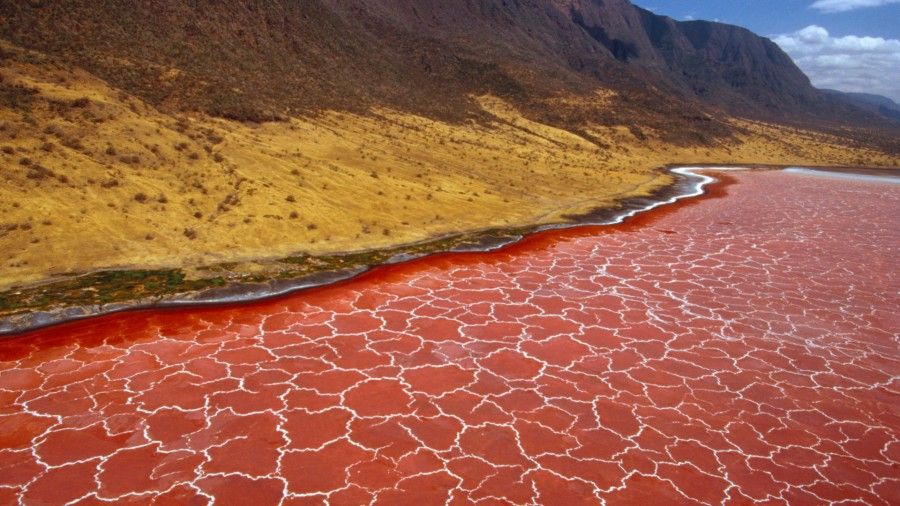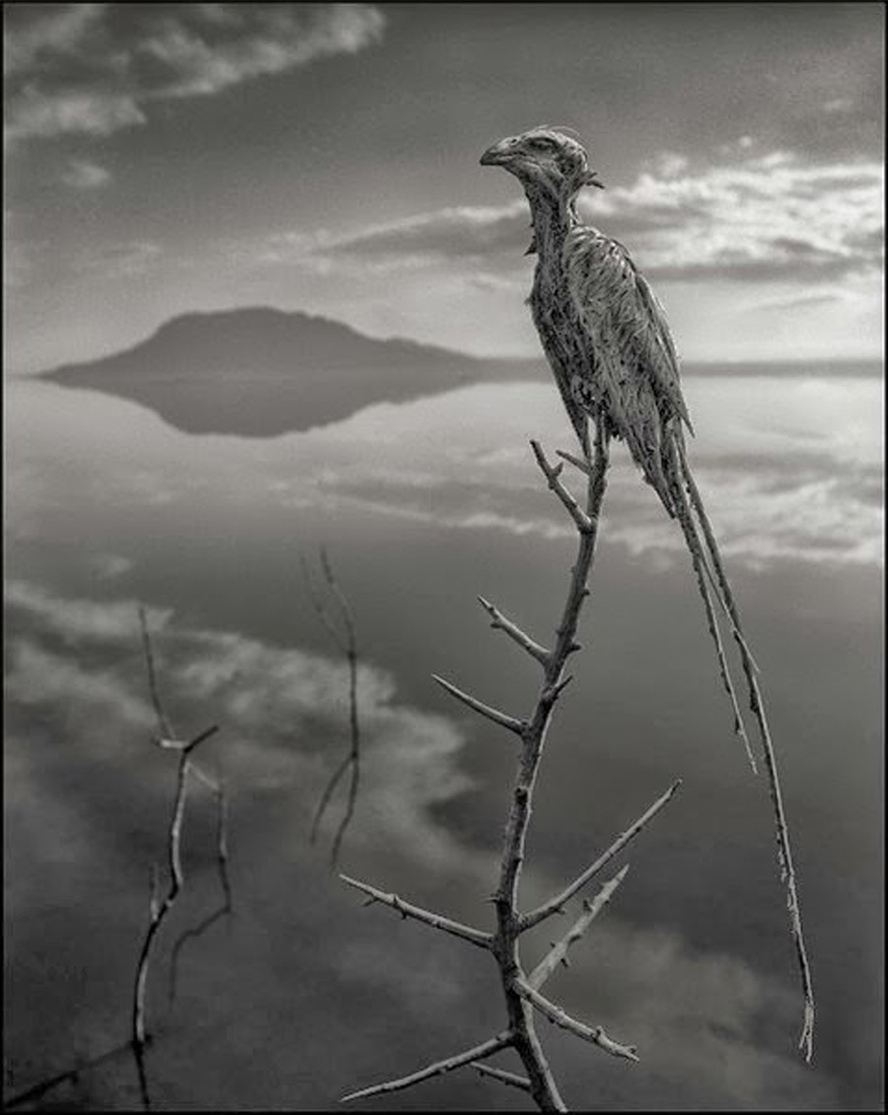

“A calcified flamingo, preserved by the highly basic waters of Tanzania’s Lake Natron and photographed by Nick Brandt,” reads National Geographic’s caption of one of the photos included in the Facebook post. The photographs included in the post were taken by photographer Nick Brandt in 2013, who collected the animal carcasses around the lake’s shoreline and posed them for the pictures, the outlet reported. The dead animals in the photos were not instantly turned to stone by the lake, but rather became calcified due to the characteristics of the lake, according to National Geographic. “Any animal which touches the lake turns into stone.” (RELATED: Does This Image Show A Heart-Shaped Pond In Zimbabwe?) “Natron Lake in Tanzania is the most (sic) deadliest place for animals,” reads text included in the image. The image shows what appears to be the petrified remains of two birds sitting on a body of water. An image shared on Facebook claims it turns any animal that touches it to stone. But what actually happens is that the corpses of animals which died in the lake are sometimes preserved by the sodium carbonate minerals and other salts that were used by the ancient Egyptians for mummification - calcifying their bodies.Lake Natron in Tanzania is a saltwater lake with a pH of 10.5 (nearly as high as that of ammonia) and temperatures up to 140 degrees Fahrenheit, according to Smithsonian Magazine. More than 2 million lesser flamingos use the lake as their primary breeding ground in Africa.īut when animals die and end up in the water, something odd happens: it looks like living animals turned to stone instantly on hitting the lake. Photosynthesising pigment in cyanobacteria in the water produces the lake’s deep red colour. Karumbaįlocks of flamingos, other birds and tilapia fish all call the lake their home. Lake Natron is so alkaline that animals that die and fall into the lake don’t decompose. Lesser flamingoes flock to Lake Natron in their droves for breeding season Image: Getty Images/AFP/T. While it may be paradise for haloarchaea, many creatures can't survive in such alkaline waters – but animals whose bodies are adapted to such pH levels also inhabit the lake, meaning Lake Natron is far from barren. The reason for the lake’s colorful water is down to haloarchaea, microorganisams that flourish in its salty waters – the vermillion shade is even more stunning at the end of the dry season, when the water level is especially low. The stunning red color is caused by haloarchaea, microorganisms which love salty water Image: imago/Bluegreen Pictures/J.-C.

The water comes from mineral hot springs and a river, but the lake doesn't drain out to any sea or river – evaporation is how the shallow lake loses water, which can reach as high as 41 degrees Celsius (106 degrees Fahrenheit). The lake actually takes its name from the naturally-occurring blend of chemicals it contains. This raises the lake's alkalinity to far above water's normal neutral pH of 7. Lake Natron's very alkaline water has a pH of around 10.5 - too high for many animals Image: picture-alliance/dpa/Mary Evans Picture Library/A.
Lake natron animals in colour skin#
Ol Doinyo Lengai, an active volcano, lies not far from the lake. The alkaline water in Lake Natron has a pH as high as 10.5 and is so caustic it can burn the skin and eyes of animals that arent adapted to it. It owes its unusual chemistry to the surrounding volcanic geology: the minerals, particularly sodium carbonate, and salts created by volcanic processes flow into the lake from the surrounding hills. The lake's extremely alkaline water has a pH as high as 10.5, similar to milk of magnesia, a treatment used to neutralize stomach acid.

But when coupled with the sight of dead animals seemingly turned to stone, the lake appears even more eerie. The scarlet waters of Lake Natron in northern Tanzania are eye-catching enough by themselves.


 0 kommentar(er)
0 kommentar(er)
